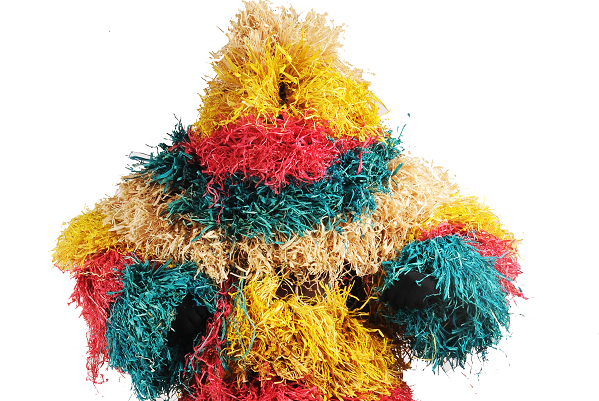BY LINDA ANUKUEM
As a child, I have always been hypnotized by my culture which spans various traditions and customs representing Nigeria. Over the years, I have promoted the continent of Africa through various channels. I tend to support projects that provide a platform for global understanding and most importantly, cultural understanding.
As a young, budding Nigerian American, I grew up around the rich Nigerian culture. I participated in traditional youth and women’s dances. But the masquerades were always intriguing to me. Bred of Ihitte-Uboma, I had the privilege of being raised in the culture. My father would host meetings in our home and his group would practice Okonko.

I can still hear the beating of the drum. In fact, I have memorized the rhythm and it just stayed with me. I watched my brothers play the drums and later found out my little brother used to wear the masquerades. I am aware I am not supposed to know these things but I was amazed he was able to perform at such a youthful age. It was overwhelming for me.
In the last few years, I have been working against a secret society tradition to honor the culture by displaying masquerades from parts of Nigeria for teaching purposes is what I call “the audacity of culture.”

The Nigeria masquerade Exhibition was conceived about four years ago. In 2019, the first edition was held and showed major potential for the long term. It is the first of its kind to display Nigerian masquerades in a non-traditional format.
When I began working with SixSense Entertainment to assist with securing the masquerades, it was particularly important to ensure the layout of the exhibition will capture pertinent information. SixSense was very instrumental with the setup, and layout and steered me in the right direction to capture the history and how the exhibition can be projected.

The exhibition currently displays the following masquerades: Eyo, Egungun, Ekpe, and Okonko.
Following the first exhibition, I became discouraged because of a few negative comments about the project, proper pronunciation of the masquerades, and my accent. I was born and raised in Houston, so the southern accent is very noticeable. In addition, I am hesitant to set up masquerades by myself.

I hire a couple of guys who are familiar with the masquerades and compensate them to assemble the installation.
The exhibition holds for two to three days during the week leading up to the annual Nigeria Cultural Parade & Festival. I wanted to leverage the momentum of the parade and provide a more subtle way to display the culture.

Before the decision to take this initiative on my own, I reached out to major museums in the local Houston area to partner with them but was not successful in my quest.
It was never the plan to host the exhibit on its own. However, I am satisfied with the progress the exhibition has made. Securing a location to serve a diverse and cultural arts audience was important for the project. I did not want to go too far from Central Houston since the Arts District was near the Downtown area.

The choice of the Galleria Houston area worked perfectly. The exhibition is currently held at the A.D. Players Theatre. The use of the lobby allows masquerades to span across the lobby area allowing passersby to view from the street side of the building.
Currently, the event attracts schools, student clubs and associations, working professionals, Nigerian Americans, and cultural Naija lovers looking to learn more about Nigerian culture.
The Nigeria masquerade Exhibition commemorates the celebrations highlighting Nigerian Independence in the City of Houston. The exhibit features masquerades from three areas of Nigeria which include the Ekpe Masquerade from Efik/Ibibio culture (Southern region), Egungun and Eyo Masquerade from Yoruba culture (Western region), and Okonko Masquerade from Igbo (Southeastern region). The exhibit also features local Nigerian artists and artifacts donated by the local community. This year, our featured local artists include Oluseyi Soyege, a sculptor and painter who owns an art gallery in the arts hub of Houston, and Ofilidesigns a.k.a. Chukwunonso.

Many Nigerian societies have a rich tradition of masquerades. Masquerades are a symbol of culture and customs. I believe the Nigeria Masquerade Exhibition is an important learning tool. It allows a sense of cultural understanding to be presented and highlights the diversity of the Giant of Africa. The exhibition in one word is a beautiful landscape of culture. It is culturally driven, and inclusive and it represents the audacity to go against the norms and traditions in a positive way. Displaying the masquerades in this capacity is not meant to demean and belittle the secret society masquerade traditions. It is to create awareness, support cultural understanding, teach important components of the culture and highlight the differences amongst ethnic groups that make up Nigeria.
Copyright 2025 TheCable. All rights reserved. This material, and other digital content on this website, may not be reproduced, published, broadcast, rewritten or redistributed in whole or in part without prior express written permission from TheCable.
Follow us on twitter @Thecablestyle

